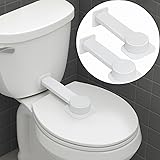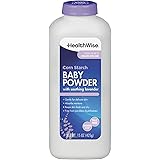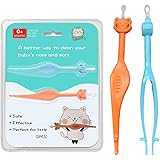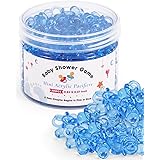Initiating the journey of starting solids is a pivotal developmental milestone for infants. As expertly demonstrated in the video above, crafting homemade baby food, like a simple carrot purée, offers profound benefits. This approach provides optimal nutritional control. It also ensures the freshest ingredients for your growing baby.
The transition from a milk-only diet to complementary foods requires careful consideration. Parents must recognize key readiness cues. This ensures a safe and positive introduction. Understanding infant nutrition is paramount. We will explore the specifics of this crucial phase.
1. The Critical Window for Introducing Solids
The timing for introducing solids typically aligns with 4 to 6 months of age. Pediatric guidelines emphasize developmental readiness over chronological age alone. Infants must demonstrate several key indicators. These signals confirm their preparedness for solid food. Neglecting these cues can introduce feeding challenges.
Imagine if a baby lacks head control; feeding becomes unsafe. Proper oral motor skills are also essential. These prevent aspiration during feeding. Each baby progresses at their own pace. Always consult with a pediatrician for personalized guidance. They confirm your baby is developmentally ready for this next step.
Recognizing Developmental Readiness Cues
Parents should observe specific signs before starting solids. First, your infant must possess good head and neck control. They should sit upright in a high chair with support. Next, watch for signs of interest in food. Babies often watch you eat with curiosity. They may even try to grab food from your plate.
The extrusion reflex must diminish or disappear. This reflex causes babies to push food out with their tongue. Without this reflex fading, feeding purées proves difficult. Lastly, consider your baby’s weight. They should have doubled their birth weight. They might weigh at least 13 pounds. These are general guidelines, not strict rules. Individual variation is expected.
2. Unlocking Nutritional Power: The Advantage of Homemade Baby Food
Opting for homemade baby food offers significant advantages. It allows parents full control over ingredients. There are no hidden sugars or unnecessary additives. Commercial baby food often contains preservatives. These extend shelf life but may compromise nutritional integrity. Freshly prepared food retains more vital nutrients.
Furthermore, homemade infant nutrition often yields superior flavor profiles. This exposes babies to a wider array of tastes. It promotes greater food acceptance later on. Imagine if every meal was tailored to exact quality standards. That is the promise of making food at home. It’s an investment in long-term healthy eating habits.
Beyond Convenience: Ingredient Control and Palatability
Homemade preparations ensure ingredient purity. Parents select organic produce if desired. They can avoid common allergens and customize textures. This is crucial for early palate development. The video highlights using fresh carrots. This exemplifies choosing whole, unprocessed foods. Such selections support optimal infant growth. They contribute to robust immune function.
The bioavailability of nutrients is higher in fresh foods. Processing often degrades heat-sensitive vitamins. Making food at home preserves these critical elements. Imagine a baby experiencing vibrant, natural flavors. This broadens their palatability. It encourages them to accept diverse dietary components as they grow. This early exposure is a cornerstone of good eating.
3. Carrot Purée: A Stellar Choice for First Foods
Carrots are an exemplary choice for first foods. They boast a naturally sweet flavor. This makes them highly appealing to infants. Carrots are also low in potential allergens. This minimizes risks during initial food introductions. Their smooth texture, once puréed, is easy for babies to swallow. It supports developing oral motor skills.
The ease of preparation, as shown in the video, is another plus. They steam quickly and purée beautifully. This makes them a convenient option for busy parents. Starting with a single ingredient like carrots helps identify any sensitivities. This systematic approach is a best practice in infant nutrition. It lays a solid foundation for future dietary expansion.
The Nutrient Profile of Carrots for Infants
Carrots are rich in essential micronutrients vital for infant development. Foremost, they are an excellent source of beta-carotene. This carotenoid converts into Vitamin A in the body. Vitamin A supports healthy vision. It is also crucial for immune system function. Strong immunity protects against common childhood illnesses.
Additionally, carrots provide dietary fiber. This aids in healthy digestion. It helps prevent constipation, a common issue with starting solids. Carrots also contain various antioxidants. These compounds protect cells from damage. They contribute to overall infant health and well-being. Their natural sugars offer a gentle caloric boost.
4. Streamlining Preparation: Tools for Homemade Baby Food Success
The video features a popular baby food maker. This appliance integrates steaming and puréeing functions. Such an all-in-one device simplifies the process significantly. It reduces the need for multiple kitchen gadgets. This saves valuable counter space and cleaning time. These units are designed for efficiency.
Alternatively, parents can use separate components. A standard steamer basket works effectively. A powerful blender or food processor handles puréeing. Imagine if you only had limited kitchen space. A multi-functional tool becomes invaluable. Selecting the right equipment depends on individual needs. Consider budget and kitchen size.
The All-in-One Appliance vs. Modular Systems
All-in-one baby food makers offer unparalleled convenience. They automate much of the cooking process. You load ingredients and press a button. The machine handles steaming and blending. This consistency is reassuring for new parents. It ensures proper cooking and texture for carrot purée.
Modular systems provide greater flexibility. Parents can steam vegetables in a pot. Then, they transfer them to a blender. This allows for larger batch cooking. It also gives more control over specific textures. For example, a high-speed blender achieves ultra-smooth purées. Food processors can create chunkier textures for older babies. Both approaches achieve excellent results. The choice hinges on personal preference.
5. Mastering the Art of Carrot Purée Preparation
Creating perfect carrot purée involves precise steps. As shown, begin with fresh, clean carrots. Wash them thoroughly under running water. Peel the carrots to remove the outer layer. This ensures a smoother purée. It also removes any surface impurities. Trimming the ends is also a good practice.
Next, cut the carrots into thin, uniform slices. This promotes even cooking. Uneven pieces cook at different rates. The video utilized “three cups of carrots.” This quantity is suitable for batch preparation. Consistent sizing ensures every piece reaches optimal tenderness simultaneously. This is key for a uniform purée consistency.
Achieving Optimal Consistency and Texture
Steam the carrots until they are very tender. They should be easily pierced with a fork. Steaming retains more nutrients than boiling. Boiling can leach water-soluble vitamins. Once steamed, transfer the carrots to your puréeing device. Add a small amount of liquid. Breast milk, as demonstrated, is an excellent choice. Formula or sterile water also works.
Purée until the desired consistency is achieved. For first foods, an ultra-smooth, thin purée is ideal. This is easier for infants to swallow. It reduces potential choking hazards. Gradually, as your baby adapts, you can thicken the texture. This progression introduces new sensory experiences. It supports the development of chewing skills. Always start with a very smooth consistency.
6. Paramount Importance of Infant Food Safety
Food safety protocols are non-negotiable when preparing infant meals. Babies possess developing immune systems. They are more susceptible to foodborne illnesses. Proper hygiene is the first line of defense. Always wash hands thoroughly before food preparation. Use clean utensils and cutting boards. Prevent cross-contamination between raw and cooked foods. This diligence protects your baby’s delicate system.
Cook vegetables to appropriate temperatures. This ensures pathogen elimination. Cool cooked food rapidly before storage. Do not leave purées at room temperature for extended periods. The bacterial growth zone is between 40°F and 140°F (4°C and 60°C). Adhering to these simple rules minimizes risks. It ensures your homemade carrot purée is safe.
Best Practices for Storage and Reheating
Once cooled, portion your carrot purée into small, individual servings. Food grade containers or ice cube trays are ideal. Freezing in small portions allows for easy thawing. It also prevents waste. Label containers with the date of preparation. Refrigerated purées are safe for 2-3 days. Frozen purées remain safe for 1-2 months.
Always thaw frozen purées in the refrigerator overnight. Alternatively, use a cool water bath. Reheat purées thoroughly until steaming hot. Stir well to ensure even heating. Always test the temperature before feeding. It should be lukewarm, not hot. Never refreeze thawed food. Discard any uneaten portions from the bowl. This prevents bacterial proliferation.
7. Diversifying the Infant Diet After Carrot Purée
After successfully introducing carrot purée, gradually expand your baby’s diet. Introduce new single-ingredient foods one at a time. Wait 3-5 days between each new food. This helps identify any potential allergies or sensitivities. Common next steps include other vegetables like sweet potato or peas. Fruits like apple or pear purées are also excellent.
Remember, variety is crucial for comprehensive infant nutrition. It exposes your baby to diverse flavors and nutrients. This consistent exposure promotes acceptance of a wide range of foods. Ultimately, the goal is to build a healthy and adventurous eater. Continuing to make homemade baby food provides a strong foundation. This approach ensures your baby thrives as they continue their journey of starting solids.











